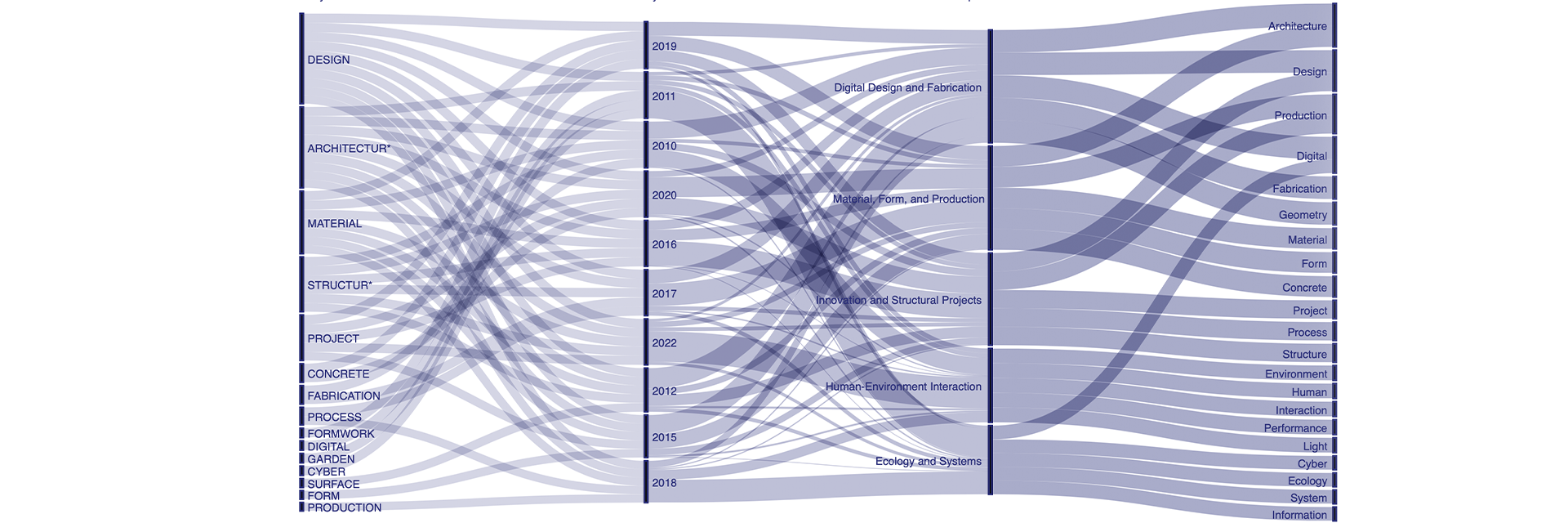
Bringing Material Back into Intellectual Production
Bringing Material Back into Intellectual Production
Computer-aided design is narrowing the gap between intellectual and manual production in architecture, according to Hayri Dortdivanliogu's research.
"The Association for Computer Aided Design in Architecture (ACADIA) is one of the leading conferences in computational design. A few years ago, to mark the 40th anniversary of the conference, they created an archive of all the proceedings and publications throughout the history of this conference," said Dortdivanlioglu, instructor in the School of Architecture.
Dortdivanlioglu offered a proposal for a fellowship, which led to the recent study, presented at the Habits of the Anthropocene conference. "I was honored as an honorary mention for the fellowship and they asked me to do a project out of these conference proceedings as well. So my proposal is mainly related to my dissertation study, looking at the relationship between intellectual production and manual production in computational design."
"I use mainly digital humanities tools like text mining to look at the main keywords that are used throughout the proceedings, and look at their trends, which keywords become like more popular, in which years in what location, related to which topics?"
Dortdivanlioglu's meta-analysis of the conference proceedings showed an increasing emphasis on linking theoretical design to physical reality. "Especially in the last two decades, here has been a trend in computational design to consider how we can introduce material back in the design process and also how we can deal with digital fabrication tools in relation to digital design tools," Dortdivanlioglu said.
"In the last few years, designers are also looking more at how we can interact with computational design in a more tactile way."
Dortdivanlioglu's research on the topic made the conference analysis a natural fit. "My dissertation project is focusing on the canonical text and reading it through a non-canonical framework, because within the canon, there's this inherent dichotomy between intellectual and manual production."
"When we separate our brain from our hand, we separate the material from the form, and we separate tools from architects. We are disregarding the workmanship that it takes to build architecture."
"My goal is reading the Vitruvian text through a union of intellectual and manual production, rather than elevating intellectual production as the main goal of architecture," Dortdivanlioglu said. "The reason is that the separation is exclusionary."
The conference project is the second step in a three-stage research approach, said Dortdivanlioglu.
"The first stage is connection to my dissertation research where I examine the canonical text through a counter-canonical perspective, to analyze this separation between intellectual and embedded practices. And then the second part was the fellowship itself, looking at computational design, and tracing this gap in computational design and how different researchers attempted to bridge this gap."
"And then the next step will be focusing more on the qualitative analysis of these proceedings in relation to the data that I extracted throughout the fellowship, just to get like a more informed critical analysis of the history of the conference."
Questions?
Contact Us